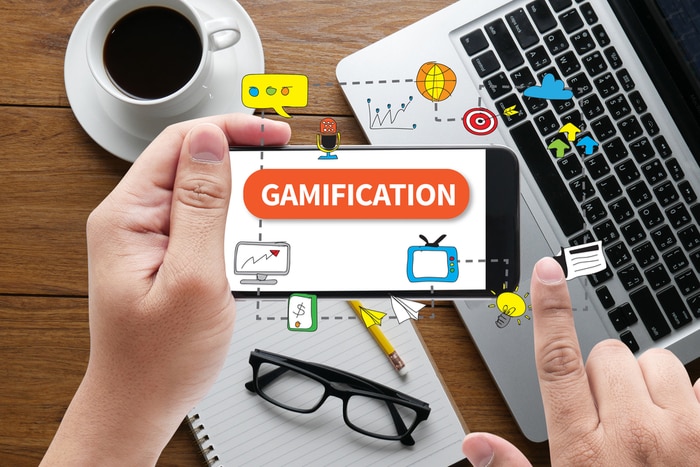Gamification and Game-based Learning: What’s the Difference?

If you haven’t tried gamification or games-based learning yet – and if you aren’t aware of what the differences are between the two, here’s the definition according to teachthought:
Gamification
Gamification is the application of game-like mechanics to non-game entities to encourage a specific behavior.
Game-based learning
Game-based learning is learning through games.
How they work
It’s easy to get mixed up between the two, but by elaborating on the definition of each one, it may become clearer why there is such a difference.
Let’s take gamification. Gamification is probably, out of the two definitions, the one that’s gaining the most traction in education. Open Badges, demonstrates how gamification can be easily incorporated into everyday learning to encourage students to achieve more in their learning.
In the teachthought blog post, this way of working is referred to as ‘encouragement mechanics.’ Open Badges can be created for any award or achievement, and given to the student to display on their profile. Further enticing students to work hard to win the badges, each Open Badge can be downloaded, printed out, and even displayed on anything from their resume to their social media profile.
Gamification is a technique if you want to encourage a specific behavior. For example, if you want your students to learn a particular passage of Shakespeare by a set date, you can offer a custom-made Open Badge for learning the passage by the date. Extra badges could be offered for those who complete the task ahead of that time. You’re therefore encouraging students to behave in a certain way in response to a task – and you’re also promoting competition between students, another benefit of gamification.
Gamification is also helps in that it engages students more with their learning; the basic idea of ‘do this, and be rewarded with this’ is a strong enough technique, but by awarding badges you’re making the achievements much more visible to their peers.
Games-based learning actually takes place far more than you may initially assume. As it is simply the process of learning through games, young people do it all the time, and have done so for years.
As computer games became more detailed and sophisticated, games-based learning really gathered pace in the 1990s, with games like Rollercoaster Tycoon – using real-life aspects like money management and strategic planning as part of the gameplay. Games created purely for education appeared around the turn of the last decade.
Really, games-based learning has a head start on gamification in the sense that students will not immediately associate a game with learning. A game environment is one they’re used to when they’re sat at home in their rooms, not thinking about school – so it’s easy to engage them, taking a ‘stealth’ approach to educating them.
Using the likes of the aforementioned Rollercoaster Tycoon, the real benefit of games-based learning is to encourage strategic thinking. Placing students in a real-life environment, albeit within a game, means they have to solve real-life problems. This is great for lateral thinking, and therefore expanding the mind, and helps a learner to apply solutions to different situations.
Learning through games can also be a useful tool to engage struggling or ‘non-academic’ students – again, putting them in an environment that is engaging and familiar to them, and won’t immediately seem like schoolwork.
In recent years, after the boom of strategy games (again, yes, like Rollercoaster Tycoon) games-based learning is everywhere. The teachthought blog post mentions games such as The Last Of Us, Fallout 3 and Fate of the World as examples that encourage competition, self direction and collaboration, as well as persistence, patience and strategic thinking. Every one of your students probably has at least one of these games back home.
As an e-learning provider, Webanywhere is a supporter of games-based learning and gamification. Of course, as a learning provider, it’s up to you to choose which of the two is most useful for two in any given situation or lesson. If you would like to find out more about gamification, learning through games – or indeed the Open Badges feature, get in touch.
